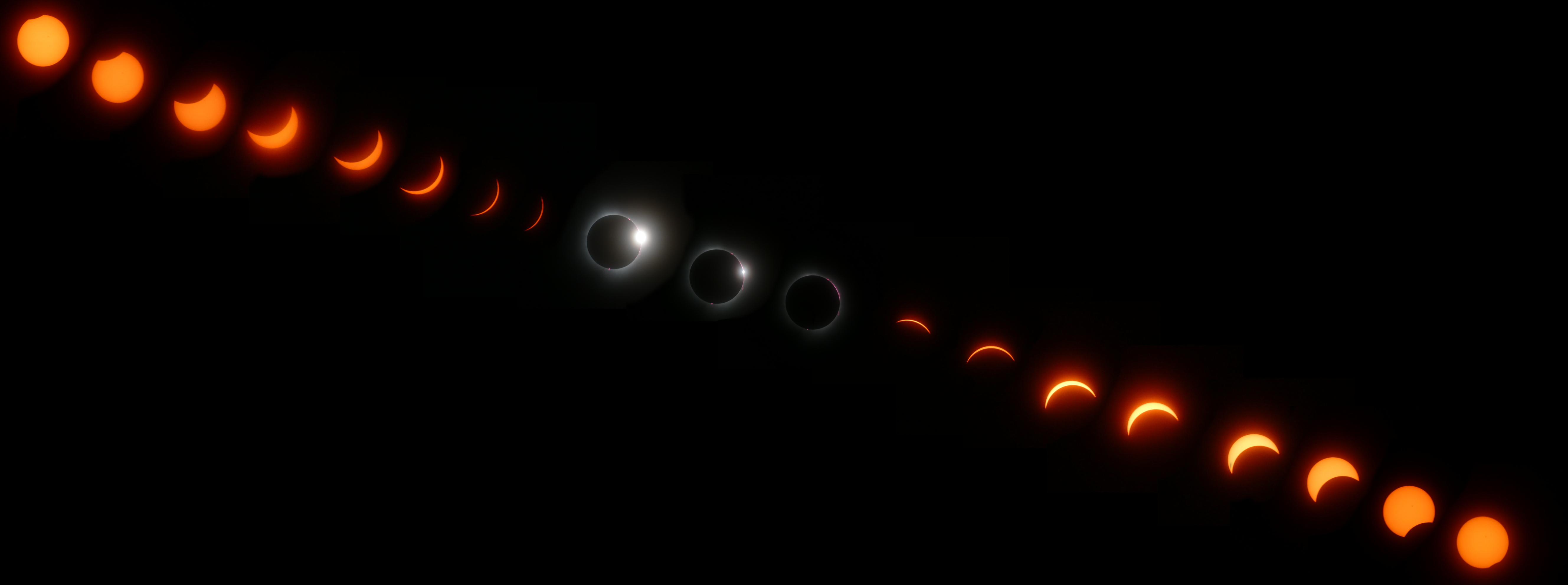

During the 2024 total solar eclipse I discovered that its actually really easy to observe sunspots.
To make it easier you can cut the eclipse glasses in half and tape them to a piece of toilet paper roll or other cylindrical thing that is big enough to fit over your camera lens.
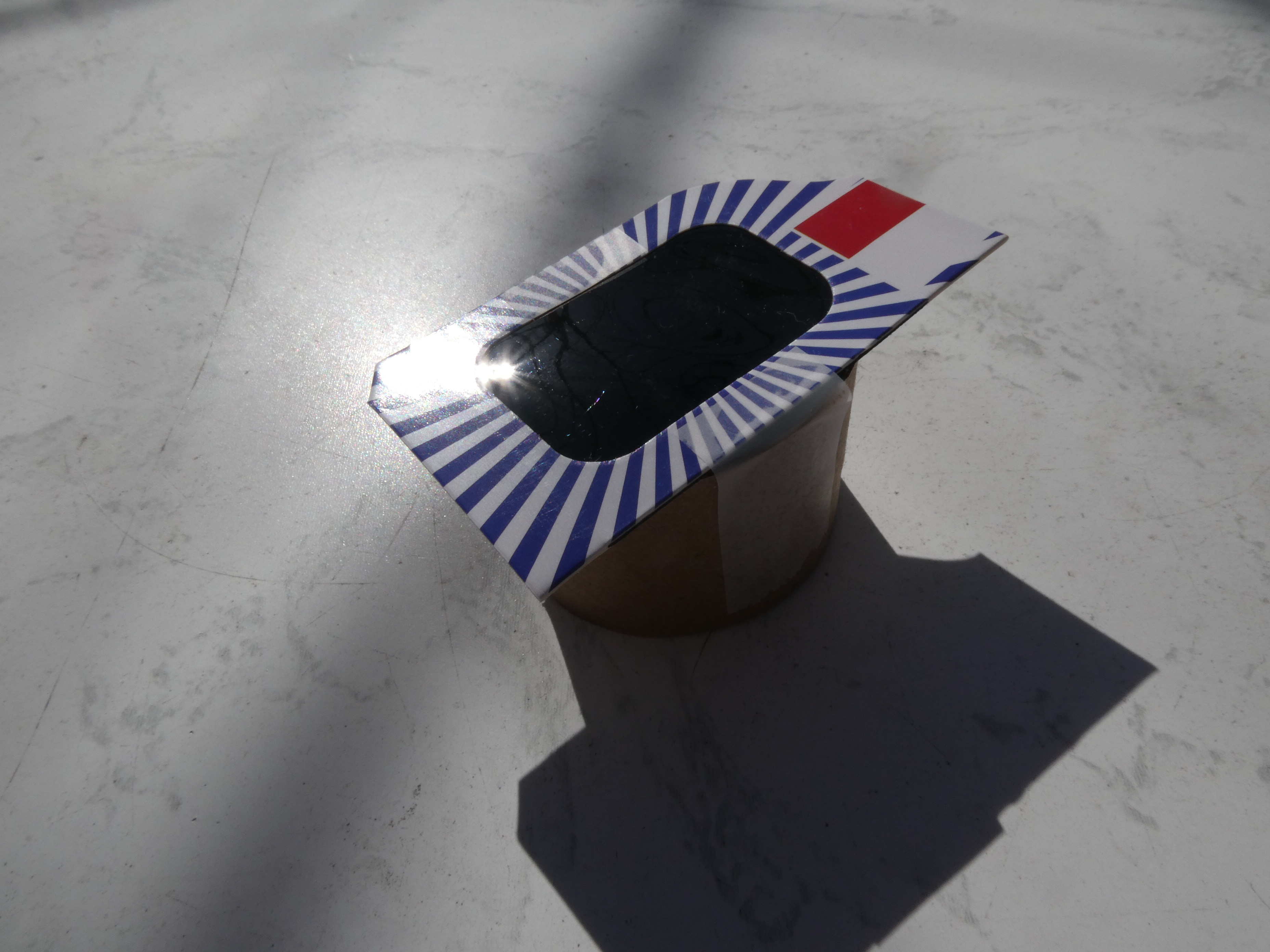
This year(2024) the sun is at a solar maxima meaning it is more active(more chance of seeing auroras far from the poles, more sunspots, etc...) It is thought that this 22 year cycle is caused by the suns magnetic field moving and flipping every 11 years.
This explains why I did not see sunspots during the 2017 and 2021 eclipses.
I know the spots I observed are most likely sun spots and not dust on the lens or the eclipse glasses because my brother discovered the big sun spot first on his camera.
Later when looking back at the pictures I discovered a second fainter sunspot further up on the sun.
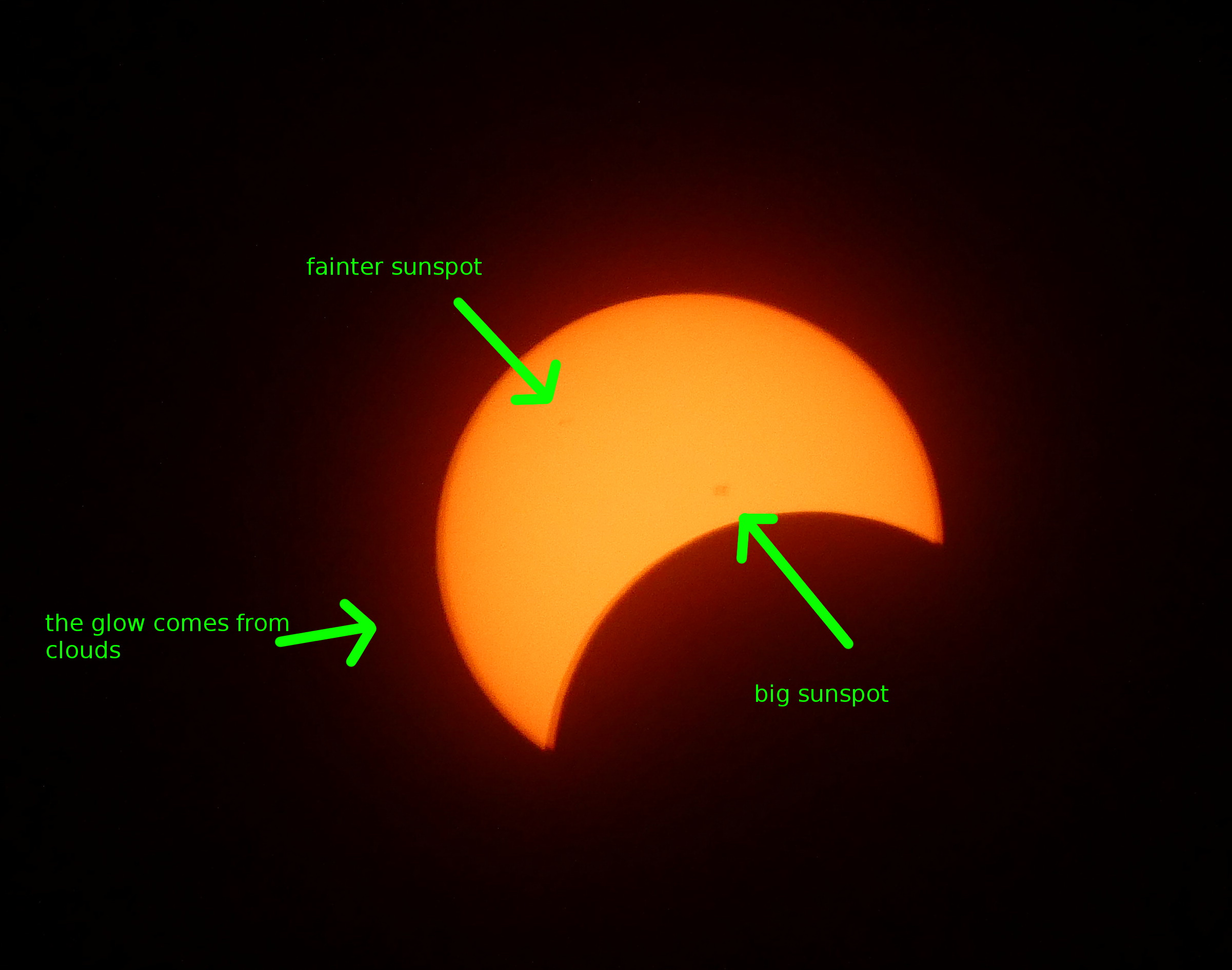
After that I did some more observations of the sun over several days to see if you can see the sunspots moving over the surface as the sun rotates.
And indeed, in just one day the 2 spots moved enough to notice a difference.

And even over just a few hours the spots moved quite a bit.
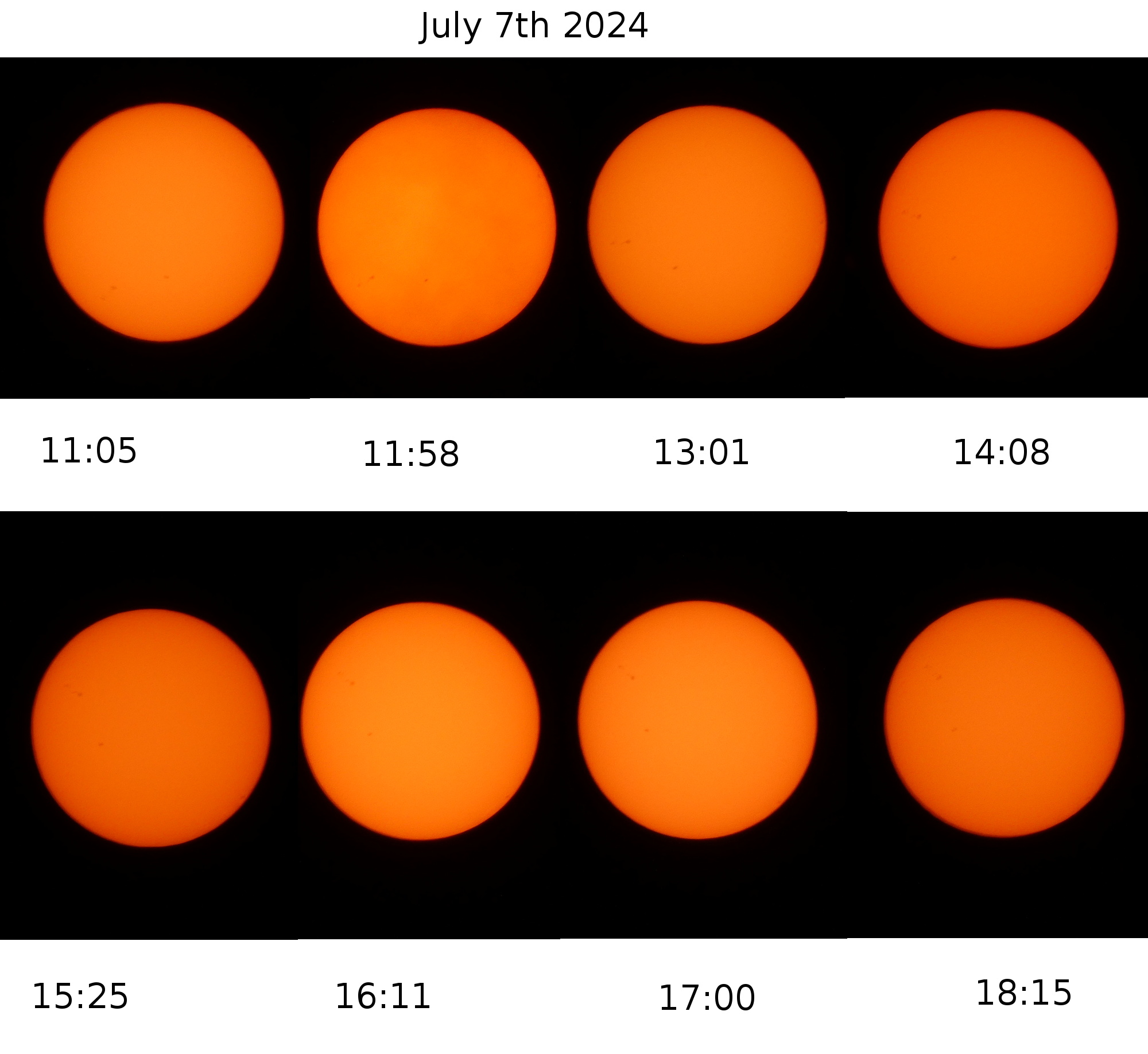
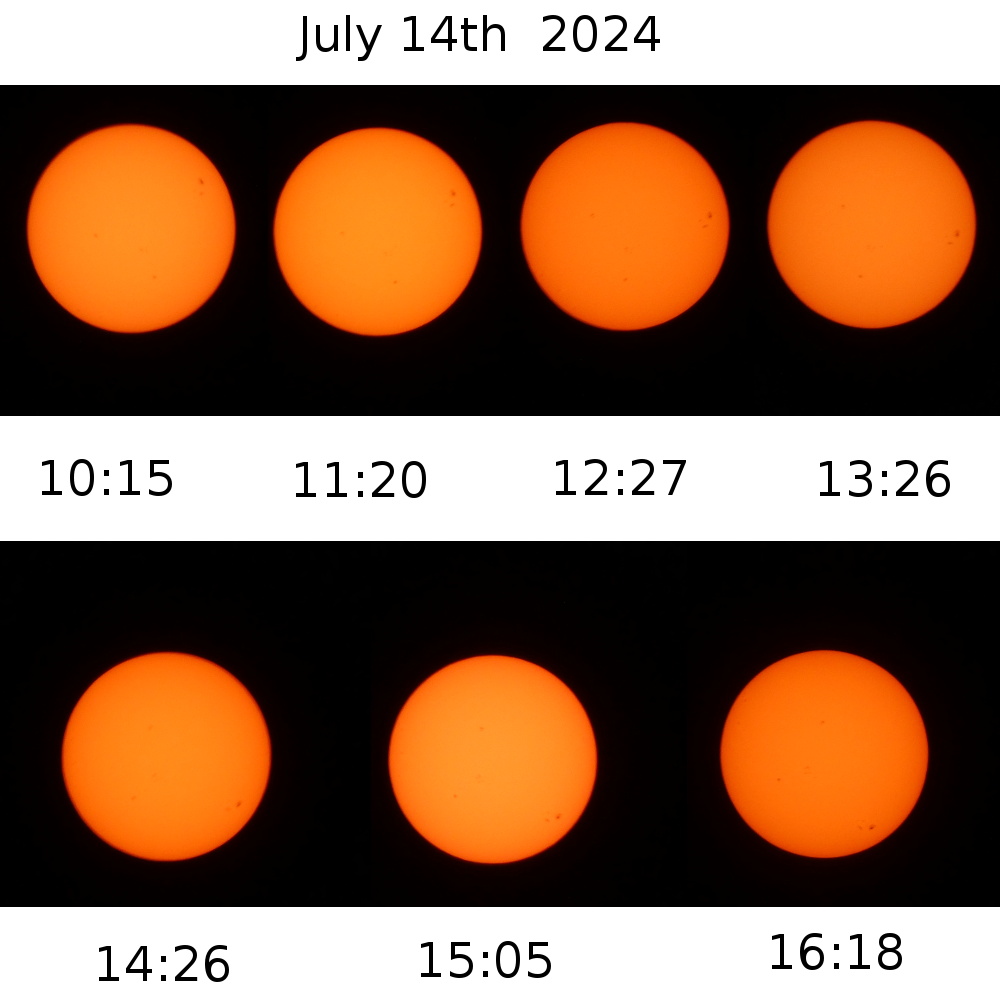
Interestingly the spots seem to rotate clockwise. I read that the surface does a full rotation every ~25 to ~35 days depending on latitude(since the sun is not a solid object). So, this CW rotation is caused by something else. Also, The sun's equator spins faster than its poles but so far scientists have not found a clear answer too why. According to google this speed measurement can be done by observing sunspots. But as seen in my observations, thats not that easy since the sun is dynamic, sunspots appear and disappear and since the sun is not solid but rather flowing plasma who said sunspots had to move in straight lines. On top of that we on Earth are not stationary relative to the sun.
After more in depth research I found out that measuring the rotation of stars is done by using spectroscopy. However, this is rather complicated as well because it only works if the star's axis is such that ~half the surface moves away and the other half moves towards us allowing to observe that the spectral lines of half the surface are more red shifted while the other is more blue shifted(assuming that the composition of the star is ~uniform meaning the shift is not caused by different composition). The Sun is only inclined by ~7degrees relative to us so this is possible with the sun. Also, since the sun is very close compared to other stars we can also observe the suns surface in different wavelength and watch the flow of gas over time in great detail. This in depth observation allows to approximate the rotation time and speed at different latitudes.
So, since the apparent clockwise rotation of the spots is constant I think that it might actually be Earths rotation. As the sun moves over the sky(aka Earth rotates around itself), our angle to the sun changes. And since the Earth rotates from west to east, the sun(and stars) move from east to west which is CW.

Copyright © 2024 Jessica Socher ()